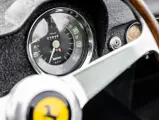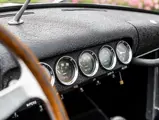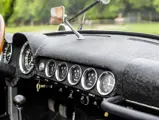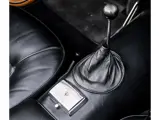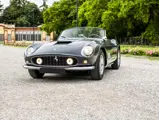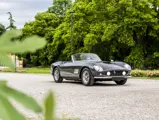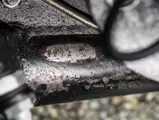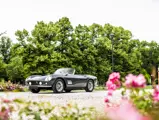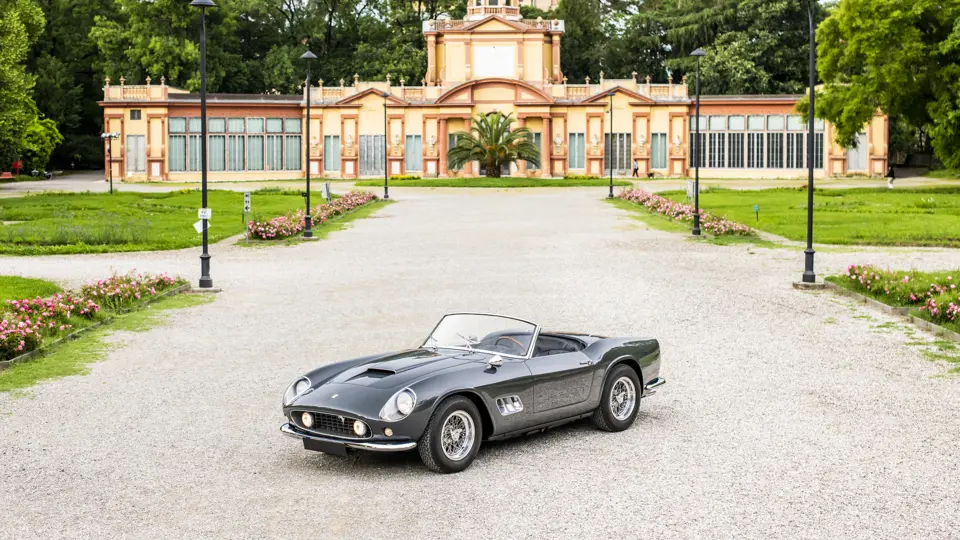
1960 Ferrari 250 GT SWB California Spider by Scaglietti
{{lr.item.text}}
$17,055,000 USD | Sold
{{bidding.lot.reserveStatusFormatted}}
- The finest, most important 250 GT SWB California Spider available
- The very first 250 GT SWB California Spider built; the car that Ferrari chose to showcase at the 1960 Geneva Motor Show
- Equipped from the factory with competition-specification engine, covered headlights, and factory removable hardtop
- Presented in its striking original delivery colors
- Ferrari Classiche Red Book-certified as fully numbers-matching, retaining its original engine, gearbox, rear axle, and bodywork
- Long-term ownership; never publicly offered for sale
- An example that transcends generations, and is likely to remain the most collectable of its peers for future generations
SWB: THE ULTIMATE CALIFORNIA SPIDER
Ferrari achieved tremendous things with the 250 GT in the early 1950s, finding remarkable success in sports car competition with the LWB “Tour de France” and 250 TR models. As was frequently the case in this era, the push to do even better came from abroad, specifically from John von Neumann, the California-based importer who had become a regular distributor for Ferrari sales on the West Coast. Von Neumann proposed the idea for a true race-and-road car, an open Ferrari that could be driven to the track, raced in, and then driven home. Official Ferrari importer Luigi Chinetti supported the idea, and soon the California Spider appeared, with open coachwork designed and built by the legendary Sergio Scaglietti on the Tour de France berlinetta’s chassis. Like his New York contemporary Max Hoffman, von Neumann had an eye for what American sportsmen wanted—he was one, after all—and the early California Spiders made a splash in GT competition, taking a class win at Sebring in 1959 and finishing 5th overall at Le Mans just a few months later.
The evolution was not yet complete, however. After 50 LWB cars had been produced, Ferrari upgraded the model further, introducing a new California Spider built on its 2,400-millimeter short-wheelbase platform. The SWB California Spider boasted several performance boosts over its predecessor, most prominently a wider track, Koni adjustable telescopic shock absorbers, four-wheel disc brakes, and the latest version of the highly developed short-block V-12. As the most advanced iteration of the design, the SWB California Spider was every bit as thrilling to drive as it was to behold. Ultimately produced in a modest quantity of 56 examples, it won famous buyers from Hollywood to the French Riviera, including actors James Coburn, Peter Helm, Alain Delon, and Brigitte Bardot; singers Johnny Hallyday and Nicholas Reynolds; director Roger Vadim; and the Aga Khan. It was perhaps the highest-performance open car of its era, and held in the same esteem then as cars like the McLaren F1 would be decades later—the best of the best of its time.
THE FIRST: 1795 GT
Chassis number 1795 GT was the very first of the 56 SWB California Spiders produced, and was fitted with the most sought-after features of a competition-specification Tipo 168 engine, which is specifically designated as “Motore competizione” on the Foglio Montaggio Motore page of the factory build sheets; covered headlights; and a factory removable hardtop. In addition, the dashboard layout is believed to be unique. Finished initially in Grigio over a red leather interior, it was displayed by Ferrari at the Geneva Motor Show in March 1960. Afterward it returned to Maranello and was fitted with a black interior before delivery via Sociéte Italauto of Lausanne to the original owner, John Gordon Bennett, a British-born racing driver, then residing in Geneva.
A name familiar in the highest echelon of American East Coast competition circles, John Gordon Bennett raced previously with tremendous success in SCCA competition, and also co-drove mightier machinery, most frequently for Briggs Cunningham; he piloted Cunningham’s C4-R at Le Mans in 1954, and, later, his Maserati 300 S and Jaguar D-Type in numerous American events. Indeed, he was as ideal a first owner for the original 250 GT SWB California Spider as can be readily imagined. Noted Ferrari historian Marcel Massini records that 1795 GT did indeed enjoy some time on the track, albeit not in anger; it was driven in the Scuderia Hanseat International Sports Car Driving School at the Nürburgring, either by Jivko Stoikovitch or Roland Marmoud, in late September 1960.
In 1963 the car moved across the Atlantic and was purchased by Bob Grossman of Nyack, New York, a prolific Ferrari racer and dealer in this era. Grossman resold 1795 GT to Chandler Kibbee, a senior executive at Phillip Morris, who kept it at his property in Sheridan, Wyoming, first wearing the New York yellow-plate registration “CK 65,” then “CK 68.” Mr. Kibbee would be a long-term caretaker of the special Ferrari, maintaining it until 1978, when it was purchased by Michael Alessandro of Pasadena, California. Mr. Alessandro had his own special registration plate for the car—“1ST SWB.” So-outfitted, it was a frequent sight at West Coast concours for the next 25 years in his ownership, appearing multiple times at the concours d’elegance on Rodeo Drive, at Concorso Italiano at Monterey, and at various Ferrari Club of America meets and enthusiast functions. It was also displayed as part of the 50 Year Ferrari exhibit at the Petersen Automotive Museum in 1997, and featured in an article by Ken Gross in the September 2005 edition of Playboy magazine.
In 2008 the car was sold to the present owner, forming the initial nucleus of what was ultimately built into a well-regarded and distinguished collection by a youthful private collector. While superbly finished and occasionally exhibited at events, including at Retro Classic Stuttgart in 2009 and Techno Classica Essen in 2010, the car’s primary purpose has been to use as originally intended, with the owner taking it on regular and exhilarating drives, rather than keeping it as a showpiece. Indeed, it could be seen in the paddock during Ferrari Racing Days at the Nürburgring in 2008, and at the Le Mans Classic in 2014.
The SWB California Spider is one of the few vintage Ferrari models to successfully transcend interest across generations. With an ageless beauty, Scaglietti’s stunning bodywork generates stares and admiration from even the newest of car enthusiasts, and once any petrolhead experiences the iconic Tipo 168 V-12 engine come to life for the first time, they will want to find a way to own an example if it is within their means.
In its long history, 1795 GT has had the most remarkable and illustrious of lives as the first example of one of the all-time most storied Ferraris. Born from competition roots, 1795 GT is one of the very few examples of the SWB California Spider—perhaps as few as three—to have been fitted from new by Ferrari with a “Motor competizione,” or competition engine, along with many of the best features such as covered headlights and an iconic factory hardtop, bringing its specifications in line with some of the famed competition models. Furthermore, having served as a factory show car at the Geneva Motor Show, one of the most important European events, 1795 GT has had just five caring owners—and only three of them in the last 60 years of its life. These are an impressive roster of attributes that surely put this car head and shoulders above any other for the connoisseur to consider.
Superbly presented in its stunning original delivery colors, and Ferrari Classiche Red Book-certified to confirm it retains its original engine, gearbox, and drivetrain, it is without question among the most significant 250 GT SWB California Spiders, and the very finest, most important and significant available—first now, as it was then, and an investment potential beyond compare.


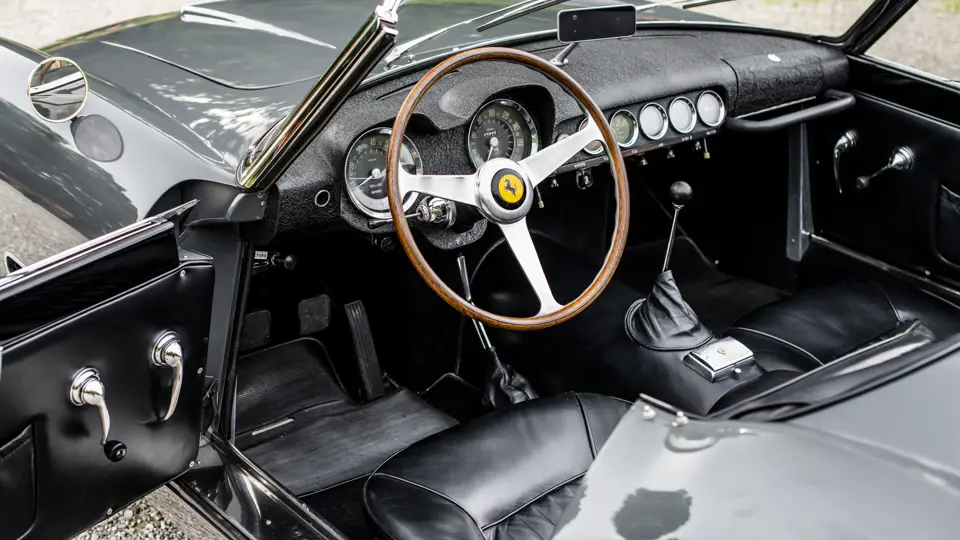


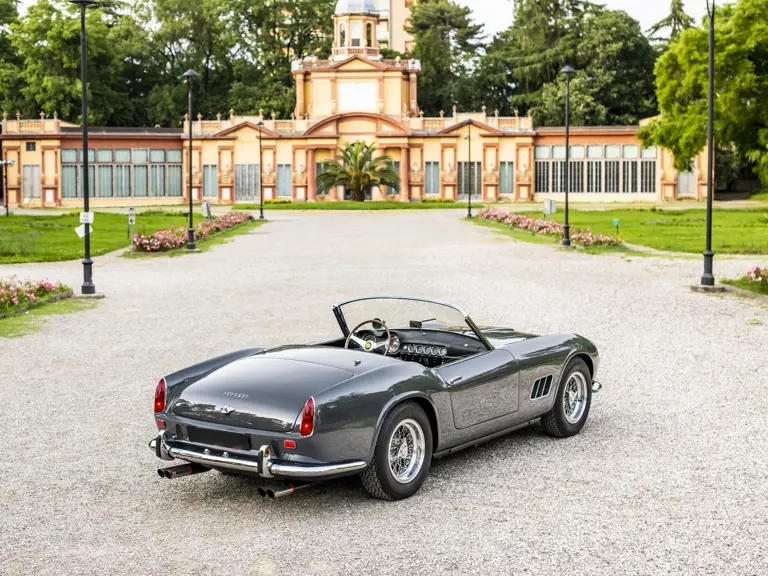






























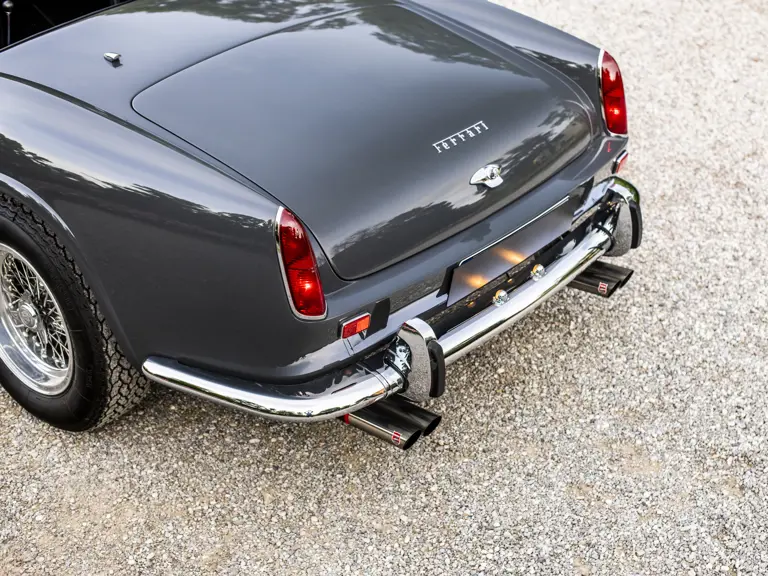












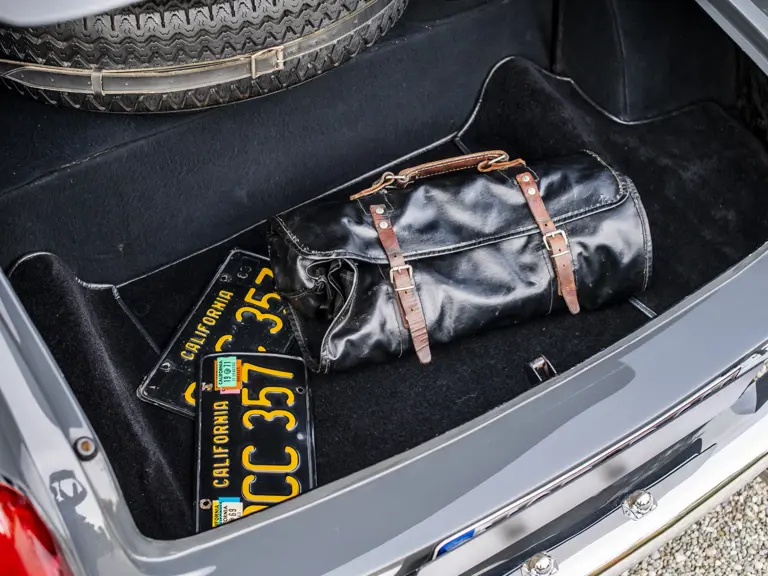


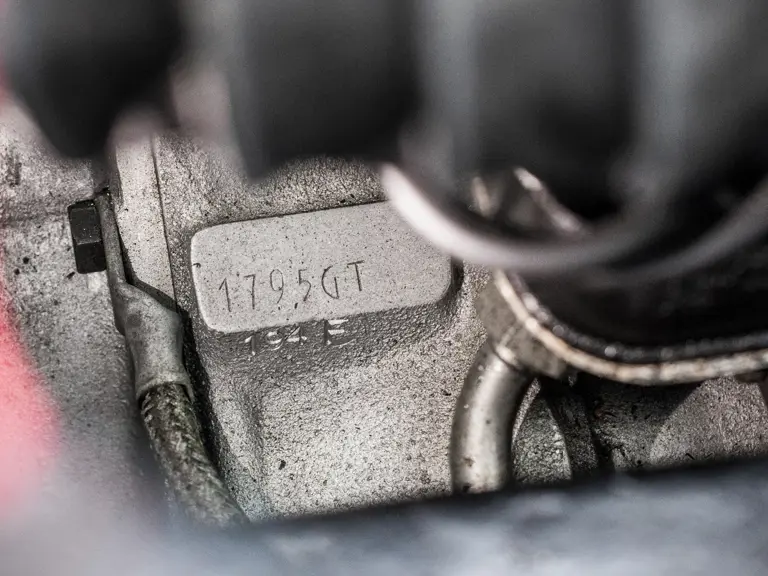










 | Monterey, California
| Monterey, California













